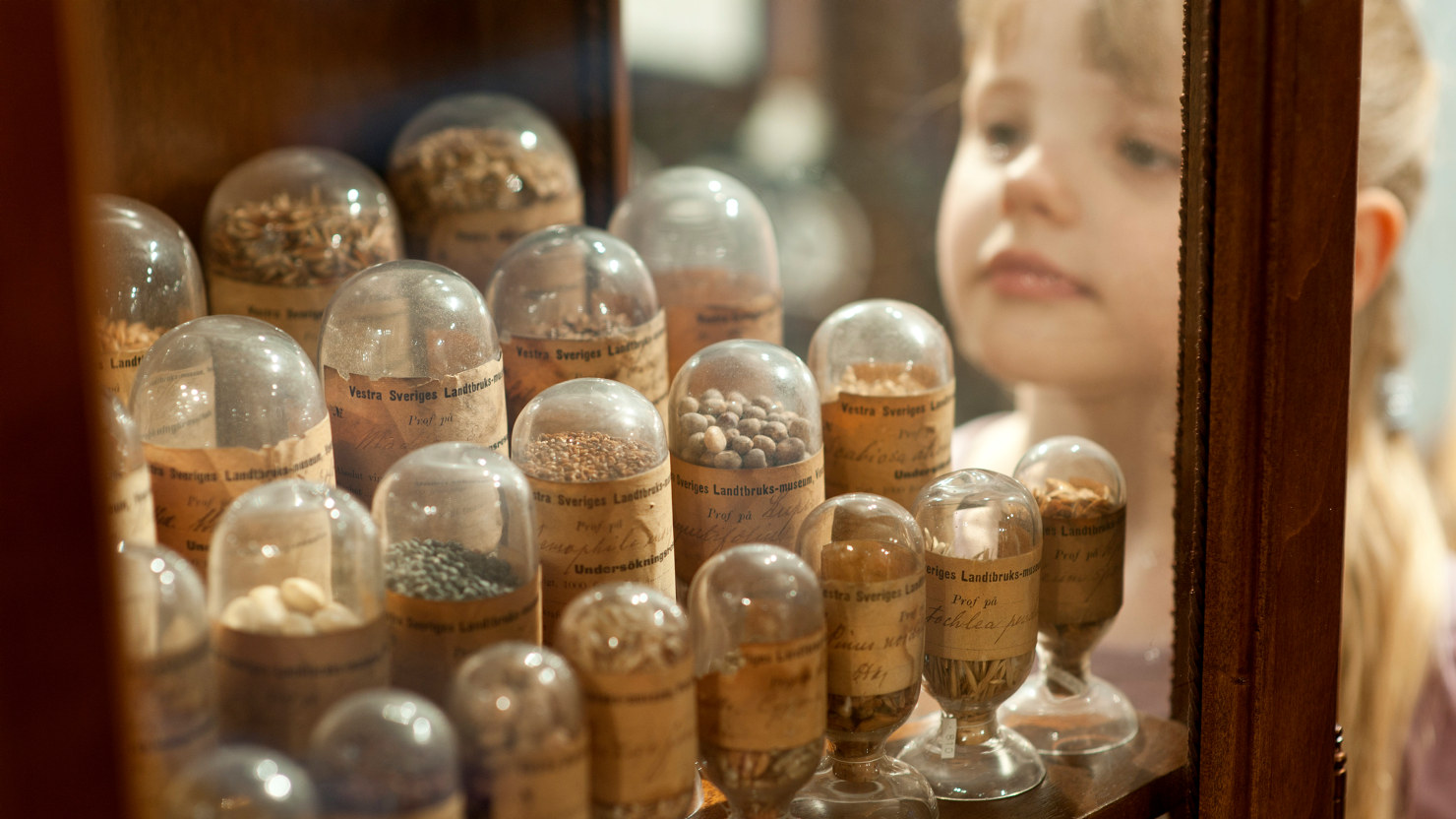Vestra Sveriges Landtbruks Museum

There was once a dream that Swedish seeds, with their renowned vigour, would be planted all over Europe and that seed cultivation would become an important business for small farmers, crofters and poor houses in the cities. In the summer of 1879, farmers were encouraged to collect samples of seeds from their cultivated plants in specially made glass containers, which were sealed and put in an exhibition in Borås the following year. The exhibition, which was to arouse a lot of interest in Swedish seed cultivation, was moved to the county governor’s residence in Vänersborg. The collection was transferred to the museum after its construction, and it now provides unique documentation and source material for a large number of long-lost Swedish cultivated plants.
County Governor Eric Sparre was the promoter of the project
This unique collection, half of which today is on display, was initiated by the governor Eric Sparre. The governor realized the Swedish seed had good quality for agriculture and wanted the country to become self-sufficient. The good quality would also lead to the export of seeds from Swedish cultivated plants that could be sold to Europe. By letting more people cultivate with good seeds would lead to a better financial position for many of the poor people, leading to more wealth for the country as a whole.
Starting with a congress and ending on Vänersborgs museum
In 1880, the governor called for a Nordic Congress in Borås for seeds and cultivation, where the previous year´s harvest of seeds would be displayed in glass containers. After the show, the entire collection was moved to the governor´s residence in Vänersborg where it was displayed as Vestra Sveriges landtbruks Museum. When Vänersborgs museum was built the entire collection was transferred to where it can be found today.
The second largest collection in Sweden
In recent years, this collection, which is the second largest of its kind in Sweden, has attracted considerable interest from the Agricultural University in Sweden and England as well as in research in archeology .






